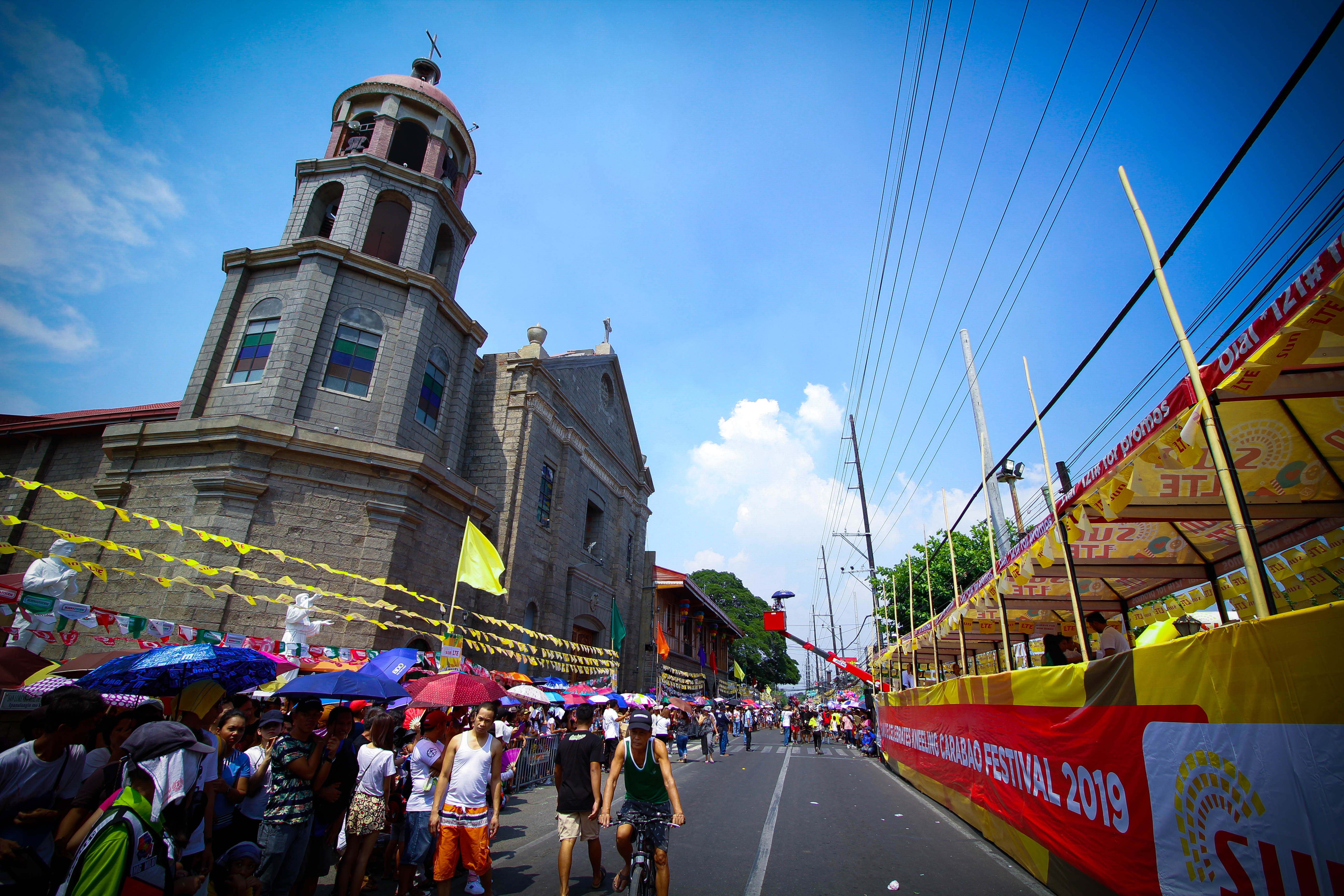
RELIGIOUS
San Isidro Labrador Parish

The San Isidro Labrador Parish Church, commonly referred to as Pulilan Church, is a 19th-century Baroque church located at Brgy. Poblacion, Pulilan, Bulacan, Philippines. The parish church, dedicated to Saint Isidore, the Laborer, is under the Roman Catholic Diocese of Malolos. The church is popular for being the site where water buffalos are made to kneel as tribute to the feast day of the patron saint. Like the Saint Augustine Parish from the nearby town of Baliuag, the church is also known for featuring one of the longest Holy Week Processions with at least 110 floats.
History - Pulilan, known before as barrio San Isidro or Buenavista, is a former barrio and parochial catchment of Quingua before it separated into a town with its own parish. Several sources provide varied claims as to the beginnings of the town and parish. One of such sources tells that the town was founded in 1749 under the advocation of San Isidro and was subsequently named Pulilan in 1850 by Father Ignacio Manzanares of Hagonoy in 1871. Likewise, Father Simon Barroso called the town San Isidro de Pulilan in 1873. The parish of Pulilan was declared as independent some time in 1780 to 1785 according to Father Martinez de Zuniga, although it was not indicated in the report to the Augustinian Province in the Philippines in 1760.
Architecture - Parochial structures of light materials were said to have been built immediately after the erection of the parish. In 1826, Father Juan Rico started the construction of a new church. One record tells that the church is still under construction in 1829 as it says all churches in Bulacan are already made of masonry except for the church of Pulilan which was still under construction. Two earthquakes, on June 3, 1863 and 1880, damaged the church greatly. Father Miguel de Celis rebuilt the church a few years later.
The facade of the church is predominantly neo-classical and is devoid of heavily detailed ornamentation. Rectangular pilasters divide the facade into three vertical sections capped off by a triangular pediment. The facade is punctured by rectangular openings: three rectangular windows and one canopied rectangular main portal. Only the Augustinian emblem on the pediment, motifs on the cornice and the balustrade on the belfry break the monotony of design. The plastered façade contrasts greatly with the bare stone walls on the side and interior of the church. To the right of the church is the three-tiered bell tower, with the top level done in concrete.
The SIL Church is the main seat of Town's Catholicism, A spanish Colonial Era structure, this was build in 1829 by Fran Juan Rico but was damaged during earthquakes of 1862 and 1880. It was repaired and rebuilt but maintained its old appearance.
